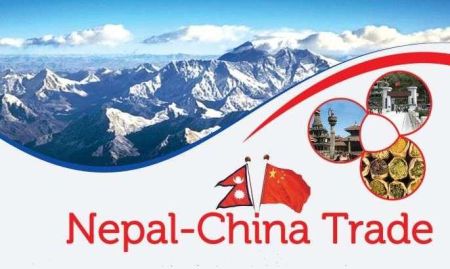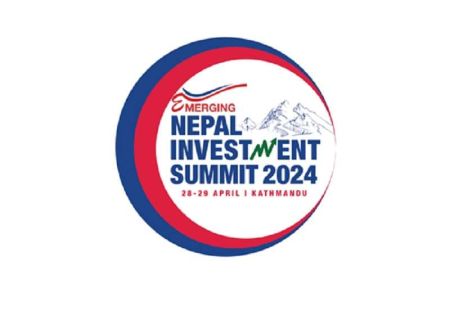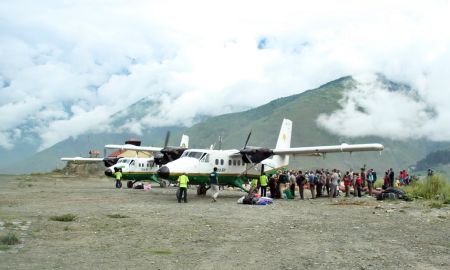.jpg)
--By Suraksha Adhikari
A country endowed with immense hydropower potential has been facing an acute energy crisis. Despite Nepal’s potential wealth in solar energy and hydropower the development of these energies has not kept pace with population growth. The little renewable energy that has been harnessed is poorly distributed due to crumbling infrastructure that is incapable of delivering, for example, parts for wind turbines.
More than half of the country’s households - almost all in urban and semi-urban areas - are connected to the national electricity grid. But 80 percent of the population is rural, and in these areas, less than one-third has electricity. With grid extension to the country’s hilly and mountainous areas prohibitively expensive, officials are looking to off-grid renewable energy alternatives.
Govinda Raj Pokharel, Executive Director of Alternative Energy Promotion Centre (AEPC) said, “We are using alternative energy mainly for rural electrification that provides an easy access of clean energy to rural area. But now we are moving to urban areas with the use of solar and utilization of bio degradable waste.”
Talking about the consumption of renewable energy in Nepal he said, “Quantity-wise, renewable energy is covering 1 per cent of total population of the country. Our energy comes from bio-mass which is consumed by around 87 per cent of the total household.” But in terms of number of population around 14 percent of total population is using renewable energy to get light, Pokharel added.
Alternative Energy Promotion Center is a national focal government organization for promoting renewable and alternative energy technologies in Nepal. AEPC is acting as an intermediary institution between the operational level i.e. NGOs/private promoters of renewable energy and the policy decision levels in relevant ministries. AEPC's activities include renewable energy policy formulation, planning and facilitating the implementation of the policies/plans, standardization, quality control and monitoring.
Pokharel further added the role of alternative energy promotion sector is mainly to promote the use of renewable energy and our approach is public private partnership. “We work jointly with private organizations that are responsible to deliver and supply energy to the people and we work to fulfill demands by creating awareness and other activities, ”he said.
Resource Potential
There are abundantly available sources for mini and micro hydro power, enough solar radiation, good potential of wind in selected areas and other biomass based resources to meet the energy need of our country.
Mini-Micro and Pico-hydro up to 100kW can be developed in a short period of time to electrify the villages. The existing total installed capacity of micro hydro projects is about 20 MW. However, altogether mini micro-hydro can generate about 10,000 MW of power in Nepal.
Nepal receives ample solar radiation as it is located in favorable latitude. With National average sunshine hours of 6.8/day and solar insolation intensity of about 4.7 kWh/m2/day, there is a huge potential for large-scale development of solar energy technologies in the country. Presently solar water heater systems have been fully commercialized and have been widely installed in the country.
About 1.5 million households can install domestic biogas plants based on animal dung. Another potential application of biogas technology in Nepal is to manage household solid waste in urban and peri-urban areas. There is also a significant potential of medium sized biogas plants suitable for SMEs, mainly in the dairy farms, poultry farms where biogas can be used directly for heat or for electricity generation that can replace diesel or other forms of fossil fuels. The other biomass waste having energy potential includes municipal solid waste. Over 1,350 tons of solid waste is generated across the 58 municipalities in Nepal. About 70% of municipal (solid) waste is biodegradable, and this waste can be used to generate energy. It is estimated that 50 million kWh can be generated per year from the total waste generated in these municipalities.
Why Alternative Energy in Nepal?
Focusing on the importance of alternative energy Pokharel said that alternative energy is important in Nepal mainly to address and reduce development disparity considering the people in rural areas also should have clean light as the people enjoy in urban areas.
Similarly Nepal has diversified land structure from plain to high Himalayas and also settlement pattern is scattered and sparse. National grid extension in some places is not economically feasible. Big hydro projects need a huge investment and all the petroleum products consumed in Nepal are imported from India or overseas in the refined form for direct consumption, which is causing the economic burden for the country.
The high potentiality of the renewable energy resources available in the country is the most appropriate option for Nepal. It also helps to reduce the dependency on the traditional biomass energy resources and fossil fuels and to manage the energy crisis of the nation. This ultimately helps to minimize the degradation of the environment.
Alternative energy helps in enhancing energy security and promoting energy mix in the country.
Cost Effective
The experts of alternative energy claim that the alternative energy use costs cheaperthan traditional sources. Though initial investment cost of alternative energy technologies are expensive compared to the other traditional sources of energy. In the long-run alternative energy is mostly cheaper than the traditional sources because alternative source is almost free but you have to pay always for traditional source. Hence, if the financial mechanism can be developed in such a way that users can pay in installment basis by mortgaging house, vehicle, etc., than users will not feel initial financial burden.
Popularity of Alternative Energy
In Nepal, depending upon the geographical and type of energy required, solar is popular for lighting purpose, mini micro hydro is popular in hilly areas, biogas for cooking purpose. Around 700,000 households use biogas, 500,000 use solar and various other forms of alternative energy.
There is no doubt regarding the fact that solar energy based technologies such as Solar Photovoltaic or Solar Thermal systems are the best substitutes. Right now, in the urban sector, individual households are opting for small-scale Solar PV solutions for domestic use. Even institutions like banks, corporate offices, and hospitals have adopted larger size system to meet their immediate energy needs. Besides Solar PV, which generates direct electricity; Solar Thermal systems also play a crucial role in minimizing use of electricity from national grid as well as reduce dependency on imported petroleum products.
“Solar can now compete with hydropower,” Pokharel added. We are targeting to provide cooking stoves to 2 million and lighting to one million, he said.
Issues in this sector
Though alternative energy sources are focused on electrifying rural areas, Pokhrel says that the efforts made are not sufficient. There is still lack of alternative energy usage in the rural areas, which needs to be fulfilled.
“We are not able to provide full financing for the installation of the alternative energy systems and this affects poor and rural people,” he added.
Elaborating on the effort of AEPC in producing energy from sugarcane extracts, Pokharel said, “We are also trying to produce energy blending ethanol in petrol but lack of mandatory policy from government has restrained this effort. At least 5 per cent of Nepal petrol consumption can be replaced with this.”





















